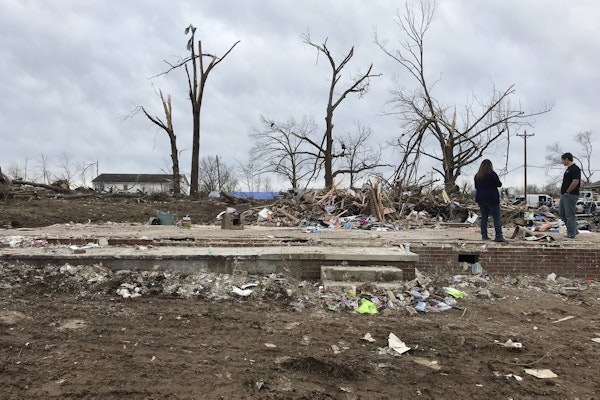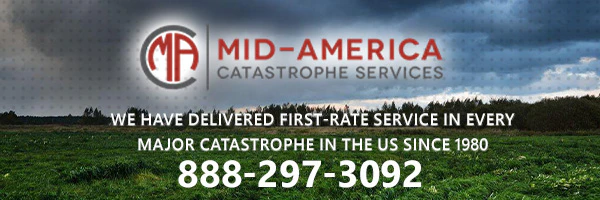
Will the Pandemic Complicate Cyber Insurance Claims?
Most organizations are now requiring that their employees work from home with the ongoing novel coronavirus disease (COVID-19) pandemic. However, in the event of a breach or other incident, there may be limitations in your cyber liability insurance policy based upon the type of hardware being used.
April 28, 2020
Liability
Technology

To Cut P&C Claims Leakage, Start With Standardization
In their search to boost profits and reduce their loss ratio, property and casualty (P&C) insurance carriers often turn to improving a cast of “usual suspects”: sales, pricing, new product development and a host of operational areas from new business through subrogation. But the biggest area to target— the one with the largest, near-term upside potential—is claims processing.
April 27, 2020
Technology

Accelerator: Pandemic Forces Fastest Transformation Ever
The insurance industry has never been known for its speed or agility. Rather, it has been characterized as slow, methodical, and cautious of any sudden movement. Of course, that’s a generalization. There are many insurance firms that break the mold and lead the way in terms of transformative innovation, but, generally speaking, most insurers have opted to spend their time on other things … until now.
April 23, 2020
Technology

Estimating Claims Remotely? Uncover Potential Fraud In Digital Loss Images
The COVID-19 outbreak has had a tremendous impact on every aspect of life in the United States. Like most companies, the insurance industry has had to drastically alter the way it does business.
April 22, 2020
Auto
Fraud
Technology

Insurance: A Business Of Judgement
Insurance is difficult. Many years ago, Scott Peck quoted in his book “The Road Less Traveled” that “life is difficult”. He went on to explain that once people accept that fact, things become a whole lot easier. While simplicity is achievable for people, not so much for insurance.
April 20, 2020
Technology

Will COVID-19 Give Telematics New Life?
Over the past several weeks, there have been numerous aerial photos of some of the nation’s largest highway systems — devoid of vehicles. The sight of tens of miles of ramps, junctions and straightaways with no visible cars is startling, almost a made-for-Hollywood view.
April 20, 2020
Auto
Technology

Mid-April Tornado Damage Imagery Now Available To Insurers
The Geospatial Intelligence Center (GIC) has collected high-resolution aerial photographs of damaged structures following a series of Easter weekend tornadoes that struck multiple states — and these photos have been made available for insurers to use.
April 17, 2020
Property
Technology
Louisiana
South Carolina
Tennessee

Coronavirus Should Finally Smash The Barriers To Telemedicine
Under normal circumstances, internist Jenni Levy makes house calls, checking on patients with chronic conditions and serving as what she calls “rolling urgent care.”
April 14, 2020
Legislation & Regulation
Life & Health
Technology
Workers' Compensation

Contactless Drone Inspections Answer Key Coronavirus Challenge
The novel coronavirus has grabbed our complete attention — and understandably so. The COVID-19 pandemic has claimed the lives of tens of thousands of people around the world, while also grinding the global economy to a halt.
April 14, 2020
Property
Technology

The ‘Race To Zero’ In Insurance SaaS
There has been a radical change taking place in insurance over the past few years. It revolves around the race to zero — or, the concept of streamlining the end user experience to ask less and less information when it comes time to file and process claims.
April 14, 2020
Technology

Building A Virtual Insurer Post-COVID
COVID-19 has left the world in uncharted waters and in many areas forced a digital acceleration of companies’ product and service delivery processes and distribution channels.
April 13, 2020
Technology

Medical Fraud: AI Can Save Workers’ Comp Industry $30 Billion
Artificial intelligence (AI) is redefining work in nearly every industry thanks to the increase in accuracy, efficiency and cost-effectiveness that AI-based applications offer. One of the latest industries to benefit is insurance, where applications are now being deployed to help detect and reduce provider fraud through advanced predictive tools.
April 8, 2020
Technology
Workers' Compensation

Insurers Must Look Forward, Not Backward, In Post-Coronavirus World
Insurance product creation historically has been based on historical data — the rearview mirror view. It always has been, and there is value in doing so. Past trends are likely to be repeated, and coverages and rating need to reflect that. And insurance departments require years of historical data to approve changes. However, there is a fundamental change afoot that cannot be ignored.
April 2, 2020
Catastrophe
Risk Management
Technology

New Phishing Scam Plays On Coronavirus Fears
A new phishing scam is playing on the public’s fears of the COVID-19 outbreak, according to the world’s largest security-awareness training and simulated phishing platform.
March 31, 2020
Excess & Surplus Lines
Technology

Will COVID-19 Disrupt Insurtech?
If there is one thing that we have all learned with the spread of COVID-19, it is that there is virtually no industry that is immune to its impact. The global pandemic is disrupting the daily lives of individuals, the operations of businesses, the activities of governments and even the approach of cherished institutions like museums, universities and religious organizations.
March 31, 2020
Technology






